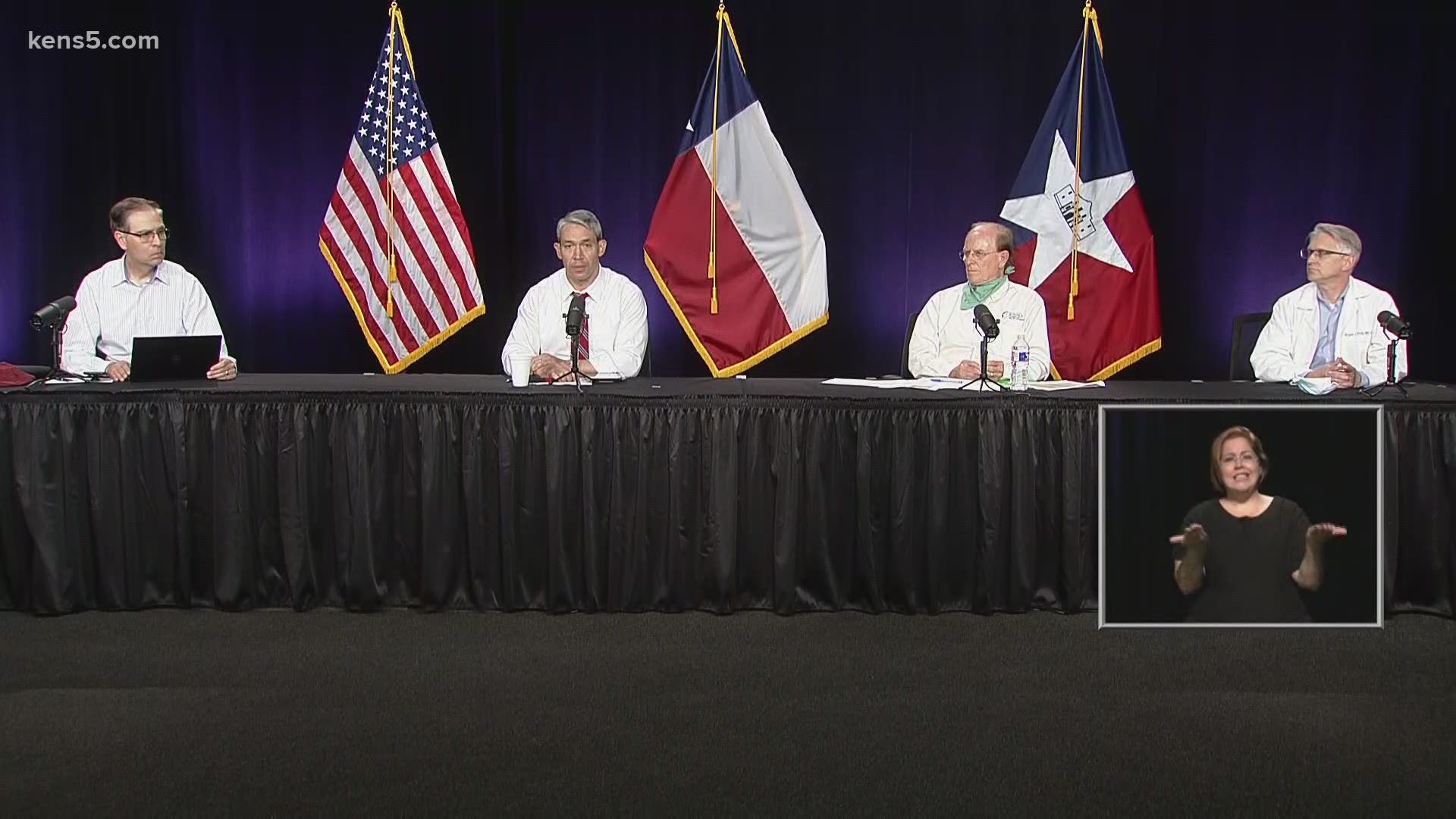SAN ANTONIO — We're tracking the latest numbers from the coronavirus pandemic in San Antonio and across Texas. Here are the latest numbers reported by Bexar and surrounding counties:
- Bexar County: 1,688 new cases and nine additional fatalities from COVID-19 were reported Wednesday. There have been a total of 33,555 cases and 283 virus-related fatalities in the county.
- Comal County: Six new deaths were reported on Wednesday by the county. The deaths were all from nursing homes and include a woman in her 60's, two woman in their 70's, a man and woman in their 80's and a man in his 90's. There have been a total of 43 virus-related deaths in the county. There have been a total of 1,804 cases with 57 new cases reported Wednesday.
- Hays County: As of Wednesday, the Hays County Local Health Department confirms there are at least 3,044 active lab-confirmed cases of COVID-19. Three additional residents have died from virus-related complications. Since Hays County first started providing numbers, a total of 4,004 lab-confirmed cases have been reported, including 21 deaths.
How Bexar County is trending:
We're tracking how many coronavirus cases are confirmed in Bexar County each day from the time San Antonio Metro Health began reporting cases more than two months ago. Graphing those daily case numbers along a 14-day moving average provides an accurate picture of the curve in the San Antonio area and the direction we're heading amid the coronavirus.
On Wednesay, Mayor Ron Nirenberg reported a substantial jump in new coronavirus cases for Bexar County, with 1,688 additional diagnoses. That number is more than three times the figure from Tuesday (551), is one of the highest daily totals for the county in the ongoing pandemic and brings the region's total number of cases to 33,555.
The numbers paint the picture of a coronavirus situation that continues to worsen for the San Antonio area. Over the past seven days, Bexar County has averaged 1,028 additional cases a day (not counting the massive "backlog" reported on July 16). By comparison, the prior seven days, July 9 through July 15, saw an average of 689 additional cases a day.
Nine new deaths from coronavirus-related complications were also reported by the mayor, including another victim in their 20s. In total, 283 county residents have lost their lives to the coronavirus.

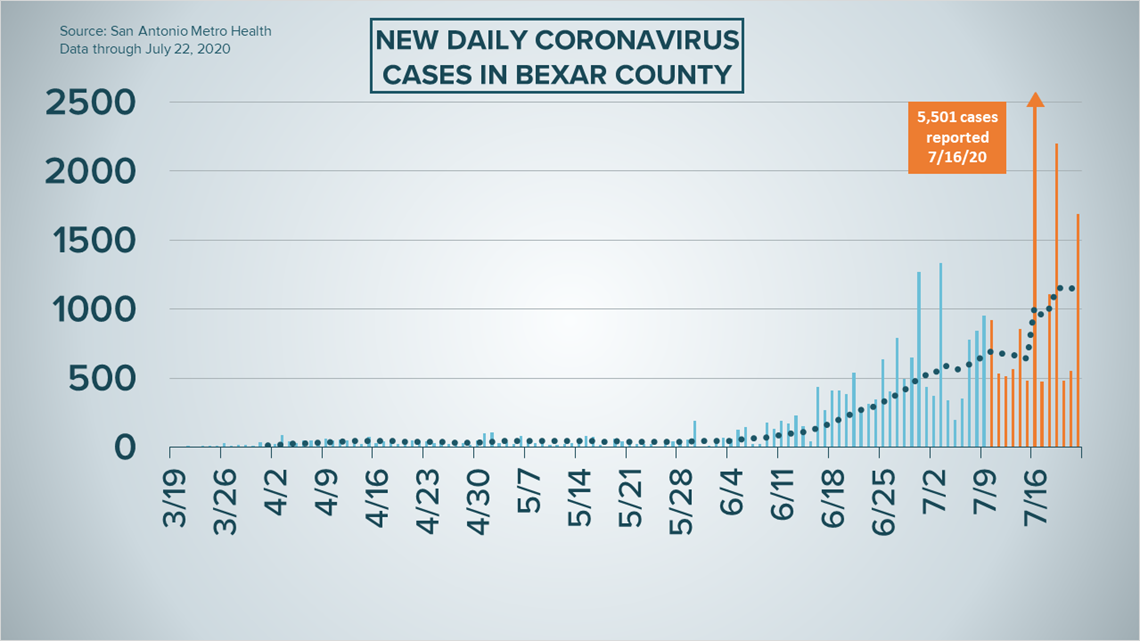
For the fourth straight day, the number of concurrent COVID-19 hospitalizations dipped slightly for the county. On Wednesday, Nirenberg said, 1,113 were hospitalized with the coronavirus, 287 were on ventilators to assist them with breathing and 429 were in intensive care.
In the county, 12% of hospital beds were ready to take a new patient on Wednesday, an increase from Tuesday.

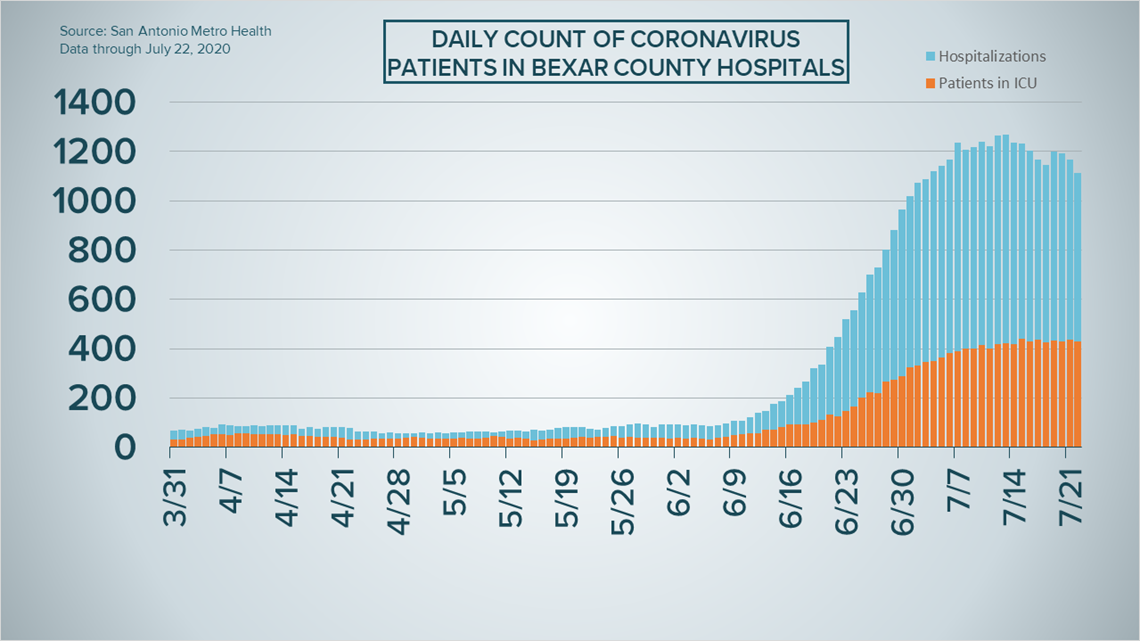
Coronavirus in Texas
State health officials on Wednesday reported another large increase in new coronavirus diagnoses, with almost 9,900. There have been 351,618 confirmed COVID-19 cases in Texas during the ongoing pandemic.
More notably, the state set a grim new high of daily virus-related deaths, with 197, bringing the statewide death toll to 4,348 as the virus continue to devastate large metro communities as well as towns near the U.S.-Mexico border.

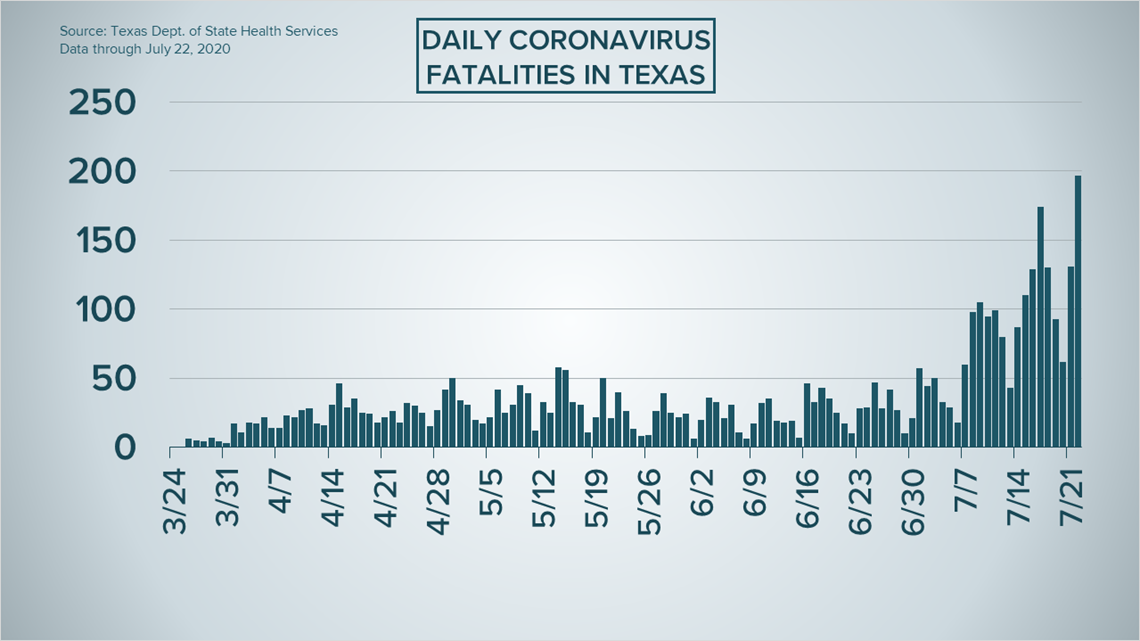

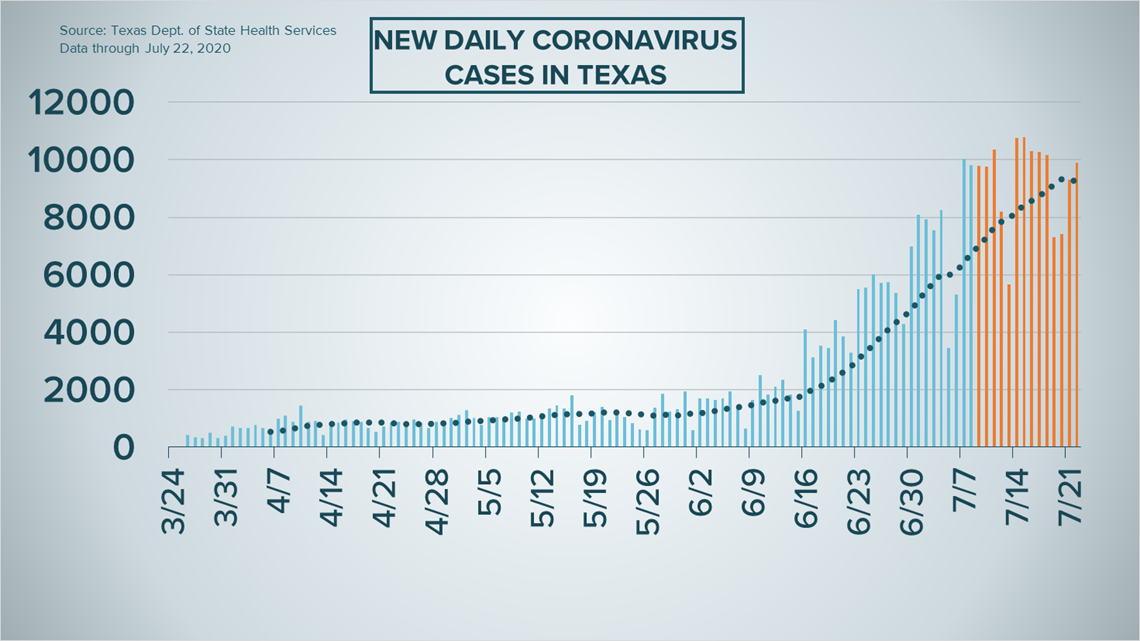
Meanwhile, another new high for concurrent Texas hospitalizations was set on Wednesday, with 10,893. That's an increase of 45 COVID-19-positive patients in statewide hospitals from Tuesday.
Latest Coronavirus Headlines
- Worldwide coronavirus cases surpass 15 million
- Demand for nurses still high despite a plateau of COVID-19 cases
- Six new coronavirus-related deaths reported in Comal County Wednesday
- $600 federal unemployment benefits end this week. What happens after that?
- US signs contract with Pfizer for 100 million COVID-19 vaccine doses
- US accuses Chinese hackers of targeting COVID-19 research
- Silent spread of coronavirus keeps scientists grasping for clues
- 211 Bexar County babies diagnosed with COVID-19, health officials say
- San Antonio couple has helped to save nearly 70 of their neighbors by donating plasma
- Trump asks people who can't socially distance to wear a mask
- Face-to-face or virtual learning? Some Boerne parents won't have a choice
Coronavirus symptoms
The symptoms of coronavirus can be similar to the flu or a bad cold. Symptoms include fever or chills, cough, shortness of breath or difficulty breathing, fatigue, muscle or body aches, headache, new loss of taste or smell sore throat, congestion or runny nose, nausea or vomiting and diarrhea, according to the Centers for Disease Control.
Most healthy people will have mild symptoms. A study of more than 72,000 patients by the Centers for Disease Control in China showed 80 percent of the cases there were mild.
But infections can cause pneumonia, severe acute respiratory syndrome, kidney failure, and even death, according to the World Health Organization. Older people with underlying health conditions are most at risk.
On June 25, the CDC expanded the list of groups at a higher risk of severe illness due to coronavirus.
Experts determined there was consistent evidence these conditions increase a person's risk, regardless of age:
- Chronic kidney disease
- COPD (chronic obstructive pulmonary disease)
- Obesity (BMI of 30 or higher)
- Immunocompromised state (weakened immune system) from solid organ transplant
- Serious heart conditions, such as heart failure, coronary artery disease, or cardiomyopathies
- Sickle cell disease
- Type 2 diabetes
The CDC believes symptoms may appear anywhere from two to 14 days after being exposed.
Human coronaviruses are usually spread...
- Between people who are in close contact with one another (within about 6 feet).
- Through respiratory droplets produced when an infected person coughs, sneezes or talks. These droplets can land in the mouths or noses of people who are nearby or possibly be inhaled into the lungs.
- Some recent studies have suggested that COVID-19 may be spread by people who are not showing symptoms.
Help stop the spread of coronavirus
- Stay home when you are sick.
- Eat and sleep separately from your family members
- Use different utensils and dishes
- Cover your cough or sneeze with your arm, not your hand.
- If you use a tissue, throw it in the trash.
Lower your risk
- Wash your hands often with soap and water for at least 20 seconds. If soap and water are not available, use an alcohol-based hand sanitizer.
- Avoid touching your eyes, nose, and mouth with unwashed hands.
- Avoid close contact with people who are sick.
- Clean and disinfect frequently touched objects and surfaces.
- The CDC recommends wearing a mask or cloth face covering if you have to be out due to an essential service or essential activity such as going to the grocery store.
- If you are 60 or over and have an underlying health condition such as cardiovascular disease, diabetes or respiratory illnesses like asthma or COPD, the World Health Organization advises you to try to avoid crowds or places where you might interact with people who are sick.

